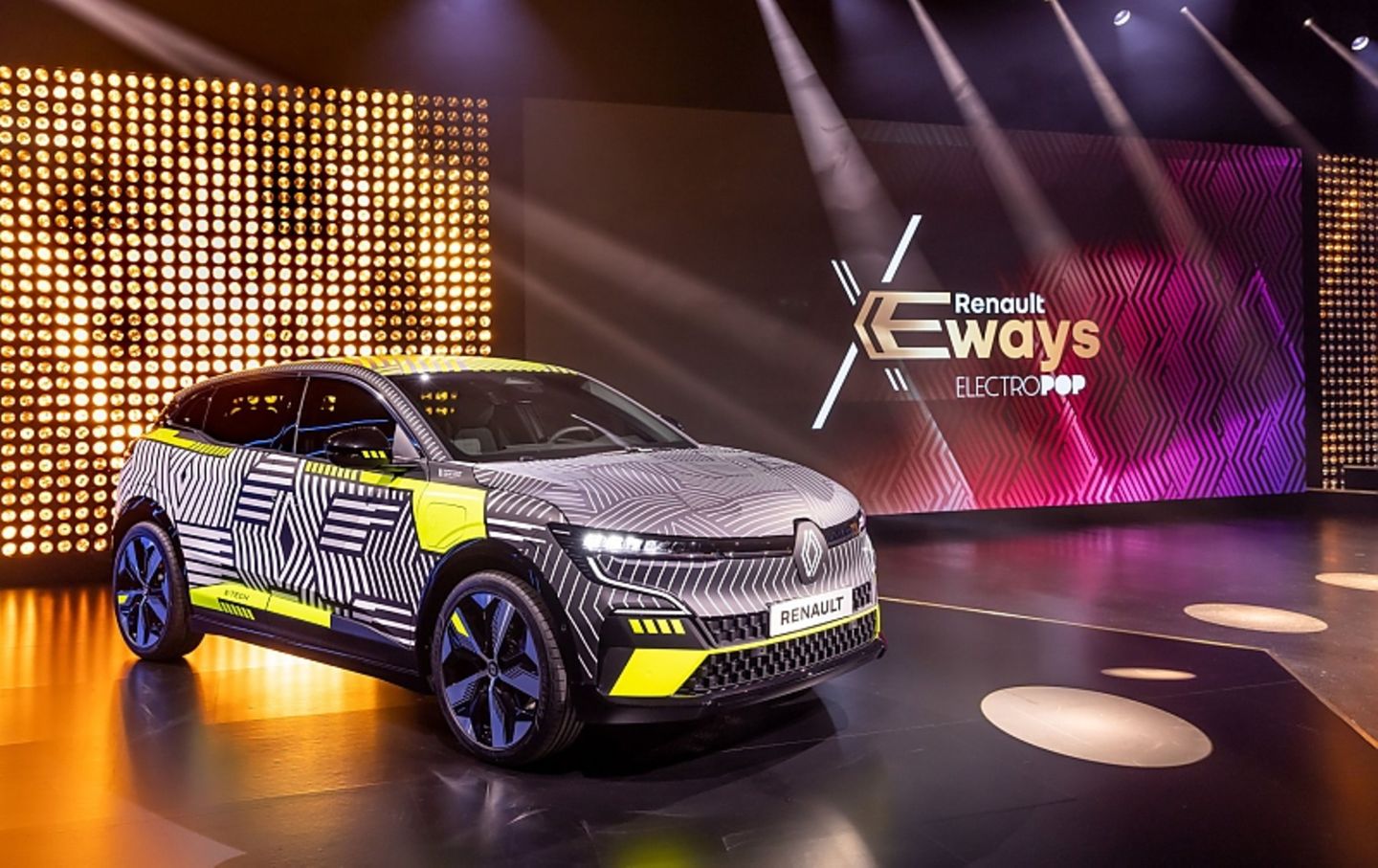The Renault Group is up a gear when it comes to electromobility: there will be ten new all-electric vehicles by 2025 and 90 percent of the vehicles sold are to be BEVs by 2030. For an e-veteran, however, these plans mean the end.
Who wants again, who hasn’t yet? The car manufacturers are currently outdoing each other in announcing ever more ambitious electromobility targets. A few days after VW presented the parameters of the E-timetable for the next few years, the Renault Group countered with the keyword “Eways” and announced ten new fully electric models in the next four years. The spectrum ranges from affordable city runabouts to sporty vehicles, such as an Alpine, as this sub-brand will only produce BEV cars from 2024. “In my career I have always pushed emotional cars because people pay money for them,” says Renault boss Luca de Meo with a smile. Not only that. By 2030, 90 percent of sales are to be generated with purely electric vehicles. “We will lead the energy transition and make electric vehicles really popular,” announced Renault boss Luca de Meo.
One model in 2024 will be the fully electric new edition of the Renault R5, which will have a range of 400 kilometers. In addition, there is probably another BEV reminiscence of the glorious past, which is currently still running under the cryptic working title “4ever”, but will probably be the new edition of the Renault 4. The two cult streamers become part of their own ecosystem. The heart of Renault electromobility will beat in the north of France in the “Renault ElectriCity”. To this end, the car manufacturer is merging the three factories in Douai, Maubeuge and Ruitz into a high-performance production network and adding a battery production facility. How important this project is for the country is shown by the fact that French President Emmanuel Macron recently visited the Gigafactory, which is expected to achieve a capacity of up to 24 gigawatt hours by 2030. “We will cut the battery price in half over the next ten years,” announced Renault CEO Luca de Meo. As a first intermediate step, the kilowatt hour should cost around $ 80 by 2025.
In order to keep costs under control in the long term, the French also keep an eye on the periphery of energy storage systems, including power electronics. “We control the entire value chain, including the battery life cycle,” announced de Meo. Of course, this project cannot succeed entirely without support, which comes from LG Chem and the new partners Envision AESC and Verkor. The aim is to double the energy density of the cells. The intention is clear: The Grande Nation also wants to become independent when it comes to electromobility and, above all, push the costs for vehicles down so far that broad sections of the population can afford the new mobility. Starting in 2024, around 400,000 automobiles are expected to roll off the assembly line each year. “We are working on pushing the costs of the BEVs below those of the combustion engine,” says chief technology officer Gilles Le Borgne.
The compact electric motors for this come from Cleon. Renault is planning a drive train that combines the electric motor, the reduction gear and the power electronics in one package that requires around 45 percent less installation space. In addition, there is a cost reduction of 30 percent for the entire drive train and a 45 percent lower energy consumption, which enables an additional range of up to 20 kilometers.
To get this development off the ground, the Renault brand plans to invest a further ten billion euros over the next five years. Compared to VW’s billion-dollar commitment, that seems small, but the French have been investing in electromobility since 2009. In addition, they were able to collect over 300 terabytes of data about the energy storage. “This is the largest data set from an automobile manufacturer in Europe,” said de Meo, knowing full well that experience also saves money in automobile construction.
The big cleaning up continues with the platforms, as Allianz cars will be based on two architectures in the future: One is the CMF-EV platform for the C and D segments as well as for sporty performance models, which allow a range of up to 580 kilometers . The new MeganE, which will be produced in Douai from 2022, uses this architecture. For popular electromobility in the B segment, the French have the CMF-BEV platform up their sleeves, which allows a range of up to 400 kilometers and is a third cheaper than the architecture of the current Zoe. The fully electric Renault 5 mentioned at the beginning will use this substructure. Depending on the platforms, the batteries will either be affordable or very efficient.
So it is not surprising that the Zoe is not renewed at the end of its model cycle, but lives on in a different way. Due to the fact that Renault was a pioneer in electromobility with the Zoe, many of the approximately 250,000 leased batteries come back to Renault. The French carmaker wants to use these returns to be at the forefront when it comes to recycling. After all, the batteries still have around two thirds of their original capacity and can be used in various ways. On the one hand as a raw material donor and on the other hand in the mobility of buses and trains. “We are already in negotiations with some municipalities”; says Clotilde Delbos, head of the Mobilize sub-brand. The whole thing will take place in the ReFactory in Flins, where, with the support of Veolia and Solway, 80 percent of the recovered materials will be used in new batteries.
The subject of batteries naturally raises the question of the energy storage systems of the future. According to Gilles Le Borgne, Renault will initially rely on NMC batteries (nickel, manganese and cobalt), which promise about 20 percent more range at comparable costs. Up to one million electric vehicles of the Renault-Nissan-Mitsubishi alliance are to be equipped with these batteries by 2030. At the same time, the era of solid-state batteries begins at Renault, where the French are two-pronged. Polymer-based solid-state batteries could be used as early as 2027, as their technology is similar to that of lithium-ion batteries. Later, around 2030, Renault will also have a ceramic-based version on its radar. Then the solid-state batteries will also cost $ 80 per kilowatt hour. A problem could still slow down the lofty plans. “We are faster than the charging infrastructure is growing. That is an issue”; explains Luca de Meo.
I am Pierce Boyd, a driven and ambitious professional working in the news industry. I have been writing for 24 Hours Worlds for over five years, specializing in sports section coverage. During my tenure at the publication, I have built an impressive portfolio of articles that has earned me a reputation as an experienced journalist and content creator.




